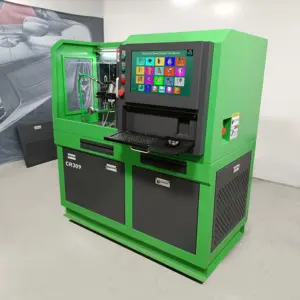Understanding Common Rail Injector Testers
The common rail injector tester is an essential diagnostic tool designed for the precise monitoring and assessment of injectors in various vehicles and machinery. This category encompasses devices that leverage advanced technologies to ensure the optimal performance of diesel engines equipped with common rail injection systems.
Types and Applications
There are multiple types of common rail injector testers available, each serving a specific function from simple fault detection to comprehensive system analysis. These testers are indispensable in the automotive industry, particularly for professionals working on diesel engines in commercial, agricultural, and industrial sectors.
Features and Materials
Constructed from durable materials like iron and stainless steel, common rail injector testers are designed for longevity and resistance to wear. Their robust build minimizes the need for frequent maintenance. These testers often feature bright LED displays for enhanced visibility during diagnostics and are compatible with various operating systems, thanks to their versatile DS Tool software.
Advantages of Using Precision Tools
Utilizing a common rail injector tester provides the advantage of accurate diagnostics, which is crucial for maintaining the health of an engine's injection system. The precision of these tools allows for effective troubleshooting, potentially reducing downtime and operational costs.
Innovative Software Integration
Many common rail injector testers are integrated with innovative software solutions that facilitate the updating and management of customer records across multiple devices. This software enhancement ensures that users can maintain a comprehensive record of diagnostics and services performed.
Selection Criteria for Buyers
When selecting a common rail injector tester, buyers should consider the compatibility with their specific systems and the types of diagnostics they intend to perform. While these tools are designed for professional use, their user-friendly interface also allows for operation by those with less technical expertise.





































 浙公网安备 33010002000092号
浙公网安备 33010002000092号 浙B2-20120091-4
浙B2-20120091-4